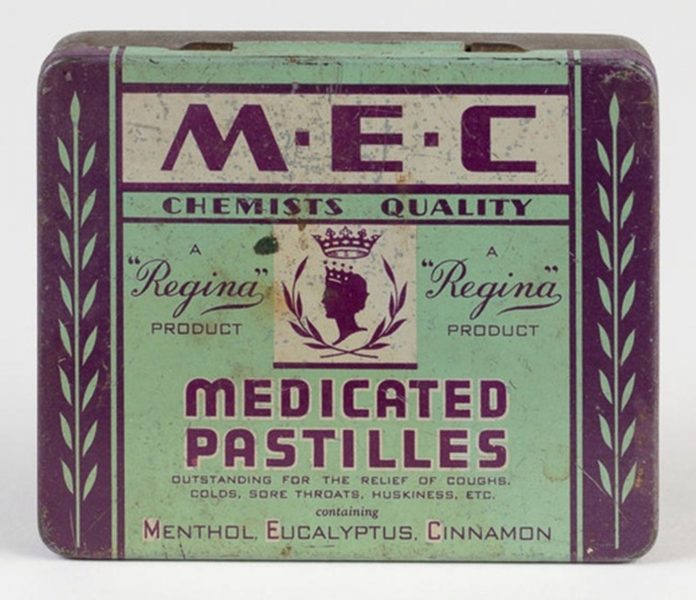Global confectionery market growth – A Summary
- Global confectionery market to reach $278bn by 2032
- Non-chocolate confectionery growing faster than overall category at 5.5% CAGR
- Chewy candy leads non-chocolate sales with 50% market share
- Seasonal events like Halloween and Easter drive peak candy sales
- Gen Z and Millennials favour sour, spicy and experimental flavours
The global confectionery market is booming.
From brightly-coloured lollipops to richly-indulgent chocolates, the industry is going from strength to strength, and sales are soaring.
Currently valued at $206bn (€177bn), it’s set to top $278bn by 2032 (market analysts Fortune Business Insights).
And one confectionery category is leading the way – candy.
Candy sales soaring
According to Data Bridge Market Research, non-chocolate confectionery sales are rising fast, with market growth at 5.5%. This outstrips overall category growth by 2.2%, and takes it from its current $87bn to $134bn by 2029.
“Non-chocolate candy is the second-largest confectionery category and its share of total confectionery units has steadily increased since 2020, reflecting consumer demand for candy’s many types and flavours,” says a spokesperson for the National Confectioners Association (NCA).
So which candies are consumers seeking most?
Sweet fan favourites
The NCA’s Getting to Know Candy Consumers 2025 report has found that a chewy candy sales make up a whopping 50% of all non-chocolate confectionery sales.
Top 5 candy types:
- Gummies
- Chewy candy
- Hard candy
- Lollipop
- Licorice
Freeze-dried and liquid-filled candies are also big winners with younger generations who like to experiment with different textures.
And when it comes to taste, classic fruit flavours come in top, with a 42% share of the market. Though sour, spicy, and “mystery” flavours are proving popular with Gen Z and Millennials.
As to who’s buying them, well, all generations of course, but Gen X currently leads unit sales, with Millennials close behind.
Sweet seasonal spending
Diving into confectionery sales, we find that seasonal spending remains the primary driver, with Halloween, Easter, Valentine’s Day, and Christmas, leading the way.
“Candy remains deeply tied to both everyday enjoyment and special moments,” says a spokesperson for the NCA. “61% of consumers enjoy candy as a self-treat, while major holidays like Easter, Halloween, and winter celebrations anchor seasonal peaks.”
Added to this, candy sales benefit from planned and unplanned purchases, so there really is no bad time of year for the industry. In fact, mood is the top purchase driver, be it happy or sad.
Price is next in line, in terms of shopper priorities, so brands need to make sure they’re getting that right or they might just lose out to competitors.
Finally, brand comes in third in the importance stakes, showing that “brand power” isn’t as powerful as it once was.
Who’s buying candy today and tomorrow
Source: National Confectioners Association
| 2025 | 2030 | |
|---|---|---|
| Generation Z | 3.2% | 17.2% |
| Millennials | 30.2% | 34.1% |
| Generation X | 32.3% | 25.7% |
| Boomers | 31.2% | 21.8% |
| Silent Generation | 3.1% | 1.2% |
Chocolate market
Despite robust growth in the candy category, chocolate continues to reign supreme within the confectionery sector.
With a current global market value of $123bn, chocolate not only commands the largest share of the confectionery market but also maintains its cultural and emotional resonance with consumers worldwide. Its dominance is projected to persist, with the market expected to reach $184bn by 2033, underscoring its enduring appeal and resilience.
However, while chocolate’s market size is impressive, its CAGR is slightly lower than non-chocolate confectionery, at 4.8% (Grand View Research), reflecting shifting consumer preferences.
This suggests that while chocolate remains the cornerstone of confectionery, other segments are gaining momentum – driven by trends like health-conscious snacking, plant-based ingredients, and novel textures and formats.
In essence, chocolate’s leadership is secure for now, but the competitive landscape is evolving, with non-chocolate confectionery increasingly capturing consumer interest and investment.
What’s next for confectionery?
As consumer tastes evolve and innovation accelerates, the confectionery market is entering a dynamic new phase. Brands that embrace flavour experimentation, texture variety, and seasonal relevance will be best positioned to capture growth.
With non-chocolate confectionery gaining ground and chocolate holding firm, the future of the industry is both diverse and delicious, offering ample opportunity for manufacturers, retailers, and investors alike.
Confectionery Market to Hit $278bn by 2032 as Candy Sales Surge
Global Market Outlook: A Sweeter Future
The global confectionery market is on track for an incredible expansion, with forecasts projecting it to reach a staggering $278 billion by 2032. This surge is largely driven by increasing consumer demand for both traditional and innovative candy products worldwide. Factors such as evolving taste preferences,rising disposable incomes,and extensive product innovation are fueling unprecedented growth in the confectionery industry.
Key Drivers Behind the Confectionery Market Growth
- Changing Consumer Preferences: Millennials and Gen Z consumers increasingly favor premium, artisanal, and health-conscious candies, stimulating product diversification.
- Expansion of Distribution Channels: The growth of e-commerce and specialized confectionery stores has broadened accessibility to a wide array of candy options.
- Innovation in Flavors and Packaging: Manufacturers are introducing exotic flavors and enduring, attractive packaging styles to appeal to a wider audience.
- Emerging Markets: Increasing urbanization and disposable income in Asia-Pacific, Latin America, and Africa are major contributors to expanded candy consumption.
- Seasonal and Festive Sales: Holidays and festivals continue to be peak periods, driving bulk candy purchases and gifting sugar treats.
Popular Types of Confectionery Driving Revenue
the confectionery landscape is rich and varied, offering manny product categories.According to global trends,the following candy types generate the highest sales:
| Confectionery Type | Market Share (%) | Trending Features |
|---|---|---|
| Chocolate Confections | 45% | Bean-to-bar,vegan,single-origin chocolates |
| Gummies & Jelly Candies | 20% | Vegan,organic options,unique shapes |
| Hard Candies & Lozenges | 15% | Sugar-free,medicinal herbal blends |
| Toffees & Caramels | 12% | Salted caramel,gluten-free,artisanal |
Market Segmentation: Regional Insights
While North America and Europe have long dominated the confectionery market,Asia-Pacific and Latin america are emerging as hotbeds of growth.Here’s how the market breaks down regionally:
- North America: Focus on premium chocolates and innovative candy brands driving steady growth.
- Europe: High demand for traditional confectionery with an increasing shift towards organic and sustainable sweets.
- Asia-Pacific: Rapid urban growth and changing lifestyles boosting candy consumption, especially gummies and chocolates.
- Latin America & Africa: Growing middle class and festive culture fueling bulk and seasonal candy sales.
Emerging Trends and Innovations
The confectionery market is evolving beyond sugary treats,with trends tilting toward health-conscious options and sustainability:
- Clean Label and Natural Ingredients: Consumers demand transparency,prompting brands to reduce artificial additives and promote natural flavors.
- Functional Candies: Products enriched with vitamins, botanicals, and probiotics to blend indulgence with health benefits.
- Eco-friendly Packaging: Biodegradable wrappers and recyclable materials are becoming industry standards.
- Personalization: Customized candies for gifting and special occasions are gaining traction.
Case Study: Albanese Candy’s Success Story
Albanese Candy, renowned for its bulk candy and world’s best gummies and chocolates, exemplifies how innovation meets consumer demand. Their expansion into nostalgic candy mixes and diversified product range has allowed them to capitalize on the booming confectionery trend.
Their strategy includes:
- Offering thousands of varieties catering to wide age groups and tastes.
- Reinforcing distribution channels through retail stores and online platforms.
- Leveraging seasonal promotions and gift packaging to boost sales.
Such strategies illustrate how companies can thrive in the $278bn market by 2032 by combining tradition with innovation [[2]].
Consumer Experience: The Joy of Confectionery
The confectionery industry isn’t just about sales; it offers rich sensory experiences. From the smooth melt of a handcrafted chocolate truffle to the playful chewiness of gummy candies, consumers cherish these moments of indulgence.
Specialty shops and artisanal confections further enhance this experience by offering unique products such as:
- Rich, handcrafted chocolates with complex caramel and toffee blends.
- Locally inspired sweets reflecting cultural flavors.
- Customizable chocolates and bars for gifting or personal use.
One example is Newfangled Confections, which focuses on creating memorable chocolate experiences beyond just sweet fixes-including bars, truffles, and chocolate pies [[3]].
Benefits of Confectionery Consumption and Practical Tips
- Mood Enhancer: Consuming moderate amounts of sweets triggers endorphin release, enhancing mood and reducing stress.
- Social Connection: Sharing confectionery during celebrations bonds families and communities.
- Cultivation of Taste: Exploring diverse confectionery expands palate and inspires culinary creativity.
Practical Tips for Enjoying Candy Responsibly:
- Choose candies with natural ingredients and minimal artificial additives.
- Balance indulgence with proper oral hygiene and moderation.
- Explore sugar-free and functional candy options if managing health conditions.
- Support brands that prioritize sustainability and ethical production.
SEO Keywords Highlighted
Confectionery market, candy sales surge, global confectionery industry, chocolate confections, gummies, toffees, artisanal candy, premium chocolates, bulk candy, festive candy sales, sustainable confectionery, functional candies.


